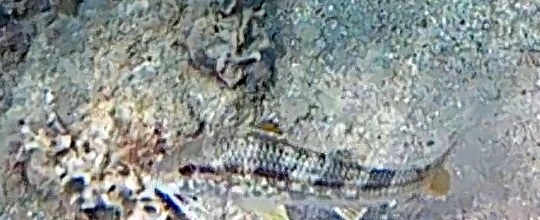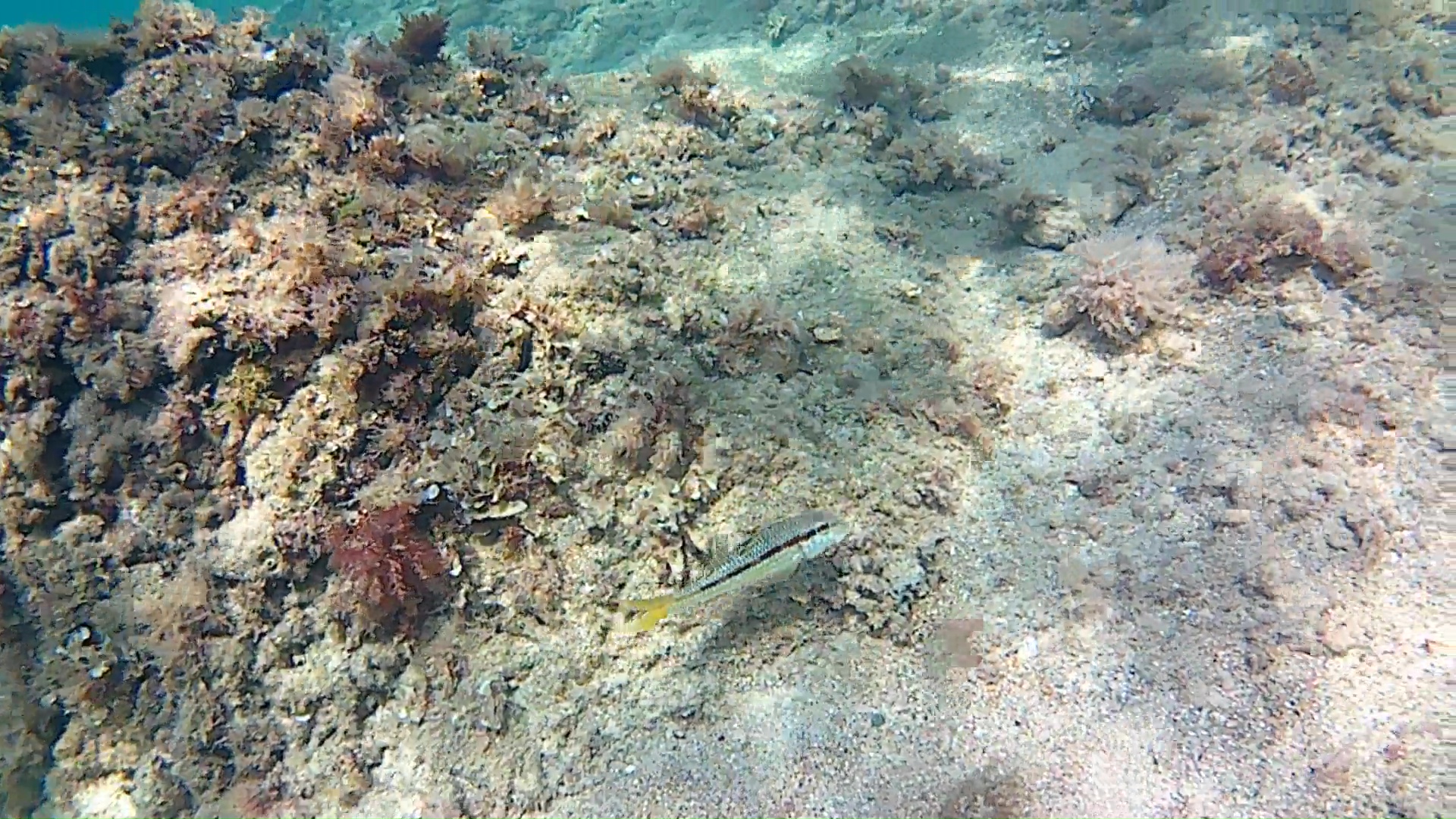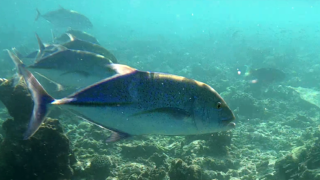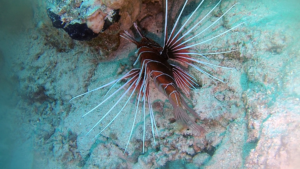Triglia di scoglio – Mullus surmuletus – intotheblue.it
Mullus surmuletus (Linnaeus, 1758) commonly known as a rock mullet, is a marine bone fish belonging to the Famiglis Mullidae.
The rock mullet is widespread in the eastern Atlantic from Norway to Senegal, the Mediterranean Sea and the Black Sea. It populates rocky seabed and also sandy or covered with vegetables, but in the vicinity however of hard substrates, always at low depths.
The rockd mullet arrives at a length between 20 and 25 cm, even if the females are larger than the males.
The rock mullet feeds on small benthic organisms such as molluscs, polychets, crustaceans, echinoderms and even small fish.
Goatfishes are characterized by a pair of chin barbels which contain chemosensory organs and are used to probe the sand or holes in the reef for food. Their bodies are deep and elongated, with forked tails and widely separated dorsal fins.
Many goatfishes are brightly colored. The largest species, the dash-and-dot goatfish (Parapeneus barberinus), grows to 60 cm in length; most species are less than half this size. Within the family are six genera and about eighty-six species.
Goatfishes are distributed worldwide in tropical, subtropical and temperate waters. Goatfishes occur in a range of habitats. Most species are associated with the bottom of the littoral, but some species of Upeneus can be deep; for example the goatfish Upeneus davidaromi can be found to depths of 500 m. Tropical goatfishes live in association with coral reefs.
Goatfishes are pelagic spawners; they release many buoyant eggs into the water which become part of the plankton. The eggs float freely with the currents until hatching. The larvae drift in oceania waters or in the outer shelf for a period of 4–8 weeks until they metamorphose and develop barbles, Soon thereafter most species take of bottom-feeding life-style, although other species remain in the open water as juveniles or feed on plankton. Juvenile goatfishes often prefer soft bottoms, in seagrass beds to mangroves. They change habitat preference as they develop, coinciding with changes in feeding habits, social behavior and the formation of association with other species. Most species reach reproductive maturity after one or two years.
Goatfish species are an important fishery in many areas of the world and some species are economically important. Triglia di scoglio – Mullus surmuletus – intotheblue.it
(extract from Wikipedia)
 English
English Italiano
Italiano






